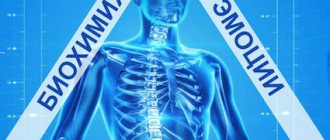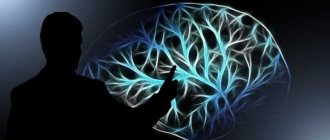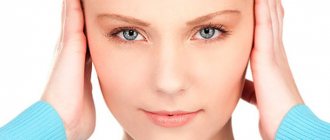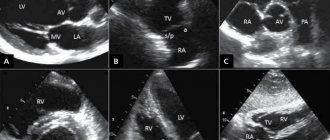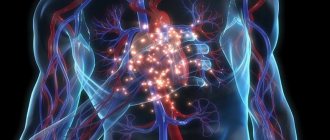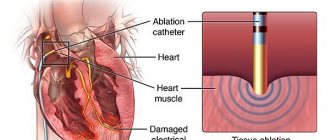Clinical manifestations of CNS PP
- Nervous system excitability syndrome: excessive and multiple movements, tremor of the chin, tongue, limbs, regurgitation, sleep disturbances (excessive wakefulness), spontaneous Moro reflex (spreading of arms in a supine position)
- Nervous system depression syndrome: decreased spontaneous motor activity, short-term wakefulness, excessive sleep, weakness of the sucking reflex, insufficient emotional response when interacting with the child.
- Autonomic-visceral dysfunction syndrome: thermoregulation disorders, transient cyanosis, disturbances in heart rate and respiratory rhythm, marbling of the skin, hypothermia of the extremities, vegetative-vascular spots on the skin, regurgitation, vomiting, unstable stool.
- Intracranial hypertension syndrome, hydrocephalic syndrome: excessive growth of head circumference, bulging of the fontanelle, throwing the head back, loud monotonous crying (brain scream), throwing the head back up to the arching of the body (opisthotonus), persistent vomiting and regurgitation not associated with food intake, increased sensitivity to sound stimuli (hyperesthesia), spontaneous bulging of the eyes (Graefe syndrome), difficulty falling asleep (wants to sleep, but cannot fall asleep), short-term and superficial sleep, excitability.
- Convulsive syndrome: various sudden and repeated contractions of the eyelids, facial muscles, abduction of the eyes, paroxysmal chewing, swallowing, sucking, protruding the tongue, swimming movements of the arms, pedaling, tonic tension of the trunk or limbs, single or group twitching of the muscles of the limbs, accompanied by convulsive eye movements or “stopping” the gaze, apnea.
- Dysregulation of muscle tone (muscle dystonia) increased, decreased, mixed muscle tone in the limbs, range of motion in the joints, spontaneous posture in sleep and wakefulness, position of the hands and feet, support during verticalization, position of the head during traction (pulling) by the handles.
Treatment and care
Victims must receive special care, and for children who have suffered HIE, it is based on control over:
- room temperature - no more than 25 degrees;
- his comfortable position, so tight swaddling is prohibited;
- so that the light is soft and subdued;
- silence;
- feeding, which should be with skin-to-skin contact and according to the baby’s needs;
- breathing, in the event of a failure in which a special apparatus is connected.
WE RECOMMEND WATCHING: Oxygen starvation of the brain
Therapy is carried out:
- Surgically, to restore and improve blood circulation in the brain. Most often, an endovascular technique is used for these purposes, which does not violate the integrity of the tissue.
- Medication, choosing drugs depending on how severe the degree of damage is and its clinical picture.
- On anticonvulsants, which stop seizures. Usually this is Phenobarbital, the dosage of which is selected individually. The intravenous method is the fastest. But the drug itself is contraindicated in cases of hypersensitivity, severe hypoxic and hypercaptic respiratory failure, problems with the kidneys and liver, and during pregnancy. Lorazepam can be used; it has a similar effect and list of contraindications.
- On cardiovascular drugs to increase systemic vascular resistance and myocardial contractile function, resulting in increased cardiac output. All drugs in this group affect the kidneys, and in case of overdose, side effects are difficult to predict. The most commonly used are Dopamine and Dobutamine.
Outcomes and consequences of CNS PP
The consequences of PP CNS can be determined by 1 year of life. Below are their main manifestations:
- Impaired motor development: delay in acquiring the skills of holding the head, rolling over, sitting, crawling, standing up, and walking independently relative to the physical age of the child.
- The formation of paresis and paralysis of both one and several limbs (monoplegia, diplegia, hemiparesis, tetraparesis), which belong to various forms of cerebral palsy.
- Violation of psycho-speech development: delay in acquiring the skill of humming, babbling, the first words and phrases, the quality of pronounced sounds, the timing of the formation of pincer grip and pointing gestures, understanding of addressed speech, interest in surrounding objects and using them for their intended purpose, the nature of the game, memorizing new information , concentration of attention with the formation of attention deficit hyperactivity disorder.
- Disorders of behavior and emotions: timing of the formation of the revitalization complex, differentiation of relatives and strangers, emotional resonance, degree of expression of emotions, communication with peers and adults, the possibility of playing together, the formation of neatness skills, possibly leading to autism spectrum disorders.
- Hydrocephalus: excessive increase in head circumference, head deformation, pronounced saphenous veins in the temporal areas, signs of hypertension and hydrocephalic syndromes.
- Paroxysmal conditions of non-epileptic origin: affective-respiratory seizures, benign myoclonus of infancy (Fijerman's syndrome), benign neonatal sleep myoclonus, Sandiffer's syndrome, infantile torticollis, restless sleep, night terrors, rhythmic movements in sleep (rocking, head shaking, thumb sucking, grinding teeth).
- Age-dependent epileptic syndromes: early infantile epileptic encephalopathy (Ohtahara syndrome), early myoclonic encephalopathy, Dravet syndrome, West syndrome, benign neonatal epileptic syndromes, benign myoclonic epilepsy of infancy, benign partial epilepsy of infancy.
How is PCNSL treated?
To restore the basic functions of the central nervous system, as well as to reduce the manifestation of neurological symptoms, the baby is prescribed a whole range of medications. Treatment can include, for example, nootropic drugs that can restore trophic processes in the brain - piracetam, Cerebrolysin, Cortexin, pantocalcin, solcoseryl and many others. In order to stimulate general reactivity, a newborn child is given a course of therapeutic massage, special gymnastics, and, if necessary, a set of physiotherapeutic procedures (for example, electrophoresis and microcurrents).
If parents detect at least one of the signs of central nervous system damage, they should immediately consult a doctor. Do not forget that the development of each child is an individual process. Such individual characteristics of a newborn child in each specific case play an important role in the process of restoring the functions of higher nervous activity.
Our help
Specialists from the Department of Developmental Neurobiology of the Research Institute of Pediatrics and Health Protection of the Central Clinical Hospital of the Russian Academy of Sciences work on the basis of the CDC:
- Diagnosis, observation and treatment are carried out by experienced neurologists, candidates of medical sciences with 20 years of experience working with this problem. Our specialists are the authors of the book “Modern neurobiological aspects of perinatal lesions of the central nervous system”, published by the publishing house of the Russian Academy of Sciences.
- Defectologists and clinical psychologists are involved in the diagnosis, who help clarify the presence of developmental disorders. Development assessment is carried out using unified development tables.
- If necessary, children can receive specialized therapeutic, correctional, developmental classes with early development specialists, aimed at stimulating sensory, visual, auditory, tactile, and coordination functions.
- There is the possibility of comprehensive monitoring of children with perinatal damage to the central nervous system with the involvement of qualified specialists, candidates of medical sciences.
- Accompaniment by an experienced pediatrician who will answer all questions about care, nutrition, prevention of rickets and ARVI, and hardening.
- Vaccine prevention department: consultation with a vaccinologist-immunologist in order to draw up an individual vaccination calendar and direct vaccination under his supervision.
- Involvement of any other pediatric specialists, including orthopedists and ophthalmologists.
What is PPCNS?
The very phrase perinatal period suggests that perinatal damage to the central nervous system develops in an unborn or newly born child. Perinatal damage to the central nervous system (PPCNS) is not one, but several diagnoses that imply dysfunction in the brain of a newborn child and can lead to persistent neurological consequences at an older age (for example, cerebral palsy, cerebral palsy).
The entire perinatal period is divided into three stages:
– from the 28th week until the moment of birth, the antenatal period ;
– the process of childbirth itself is called the intrapartum period ;
– the neonatal period is the period of time from the moment of birth to the 7th day of life inclusive.
In modern medicine there is no exact name for the disease when the central nervous system of the fetus is affected, there is only a collective one, it is called PPCNS or perinatal encephalopathy . Perinatal damage to the central nervous system in newborns is manifested by disturbances in the functioning of the musculoskeletal system, speech and mental disorders.
With the development of medicine, this diagnosis has ceased to be used for children older than one month. After a month, the doctor must make an accurate diagnosis of the child. It is during this period that the neurologist accurately determines how badly the nervous system is damaged. Prescribes treatment and ensures that it is chosen correctly.
What are the causes and risk factors for PPCNSL?
The reasons why perinatal damage to the central nervous system may develop are quite varied, among the most popular:
– somatic disease of the mother, which is accompanied by chronic intoxication;
– the presence of acute infectious diseases or chronic foci of infection while the expectant mother was carrying the child;
– if a woman’s nutritional process is disrupted, or she is not ripe for pregnancy and childbirth;
– disruption of uteroplacental blood flow during pregnancy;
– changes in metabolism also entail a disorder of the nervous system in the unborn child (increased bilirubin levels, neonatal jaundice);
– in case of severe toxicosis, both at an early stage and at a late stage, or the appearance of other problems with bearing a child;
– the environment is an important factor in the development of the disease;
– the appearance of pathology during childbirth - this may be weak labor, accelerated labor;
– if a child is born prematurely, then his body is not fully developed, therefore, against this background, a disturbance in the functioning of the central nervous system may appear;
– Children who have a hereditary factor are at greatest risk of developing central nervous system lesions.
All other causes of PPCNS are situational and, to a greater extent, their occurrence is simply impossible to predict. There are several ways of development of perinatal damage to the central nervous system in newborns, depending on the cause and subsequent symptoms, the analysis of which allows us to make an initial diagnosis:
– If a lack of oxygen is clearly detected while the baby is inside the mother’s body (hypoxia), then hypoxic damage to the central nervous system is diagnosed.
– During childbirth, the baby’s tissue structure may be damaged (this can be either the brain or the spinal cord). In this case, we are already talking about a traumatic lesion of the central nervous system, resulting in changes in the functioning of the brain.
– In case of metabolic disorders, metabolic and toxic-metabolic lesions may appear. This may be due to the use of alcohol, medications, or nicotine during pregnancy.
– Changes in the central nervous system in the presence of infectious diseases of the perinatal period.
Further observation
Patients are discharged from the hospital only after completing a full course of physical therapy and a comprehensive assessment of neuropsychic development. Most often, after discharge, patients do not require specific care, but regular examinations in the clinic are mandatory, especially for children.
If the illness was severe, the child will be observed in a special center, where he will be assisted by a neuropsychological development doctor.
Treatment for seizures depends on central nervous system symptoms and test results. They are prescribed only with a slight deviation from the norm or even within its limits. Phenobarbital is removed gradually, but it is usually taken after discharge for at least 3 months.
Degrees of severity and characteristic symptoms
Hypoxic-ischemic encephalopathy has 3 degrees of severity, which are characterized by their own manifestations. Using them, doctors often give a preliminary description of brain damage and an approximate prognosis.
Mild degree
With this degree the patient will have:
- the pupil is dilated and the eyelids are wide open;
- lack of concentration;
- impaired coordination of movements, wandering behavior;
- either drowsiness or hyperexcitability was detected;
- high degree of irritability;
- lack of appetite;
- cerebral circulation is impaired.
Average degree
Neurology with it will be more pronounced, since the disturbance in oxygen saturation of the brain is longer lasting:
- the baby has spontaneous cries for no reason;
- the protective and support reflex is either weakened or absent altogether;
- signs of muscle weakness;
- drooping upper eyelid;
- increased cerebrospinal fluid pressure;
- metabolic acidosis of the blood;
- neuralgic attacks;
- failure in the swallowing process.
Severe degree
The damage in such cases is more severe, which manifests itself in:
- convulsions;
- bluish skin;
- loss of consciousness;
- hypertension;
- lack of motor abilities;
- strabismus;
- coma or precoma;
- lack of pupil reaction to light;
- failure of the respiratory process with severe arrhythmia;
- tachycardia.
PEP is a type of hypoxic-ischemic encephalopathy in young children. It is diagnosed both immediately after birth and in the first year of life. PEP develops both in utero, during labor, and in the first 10 days from birth.
It can be of three degrees of severity with characteristic symptoms and occur in an acute form - up to a month, with early restoration of functions - up to 4 months, with late recovery - up to 2 years.
- Arthritis 3 degrees

